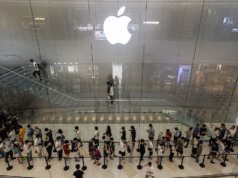The AI world descends on San Diego next month for NeurIPS 2025, and Apple is bringing its latest and greatest. But this isn’t just another academic exercise; it’s a glimpse into the future of how Apple plans to weave AI into the fabric of our everyday lives, from our iPhones to our mixed-reality headsets.
From December 2nd to 7th, the 39th annual Conference on Neural Information Processing Systems (NeurIPS) will host researchers and engineers from across the globe. Apple’s presence this year is significant, showcasing seven studies and sponsoring several affinity groups, including Women in Machine Learning, LatinX in AI, and Queer in AI. This commitment reflects Apple’s broader push for diversity and inclusion within the tech sector.
Apple’s research presentations will span a wide array of machine learning topics, tackling everything from privacy concerns to the intricacies of generative AI. One paper, The Illusion of Thinking: Understanding the Strengths and Limitations of Reasoning Models via the Lens of Problem Complexity,
is already generating buzz (and some controversy) within the AI community. It aims to dissect the reasoning capabilities of large language models, a critical area as these models become more integrated into our devices.
Beyond the headline-grabbing paper, Apple will also present research on privacy amplification and private data aggregation techniques, highlighting their commitment to user data protection. Other studies include:
- Instance-Optimality for Private KL Distribution Estimation
- Privacy Amplification
- PREAMBLE: Private and Efficient Aggregation via Block Sparse Vectors
- STARFlow: Scaling Latent Normalizing Flows for High-resolution Image Synthesis
- LinEAS: End-to-end Learning of Activation Steering with a Distributional Loss
- Scaling Laws for Optimal Data Mixtures
Attendees at NeurIPS will also have the opportunity to get hands-on with some of Apple’s machine learning initiatives at booth #1103. The demonstrations will feature MLX, an open-source array framework designed for Apple silicon, allowing for fast and flexible machine learning on Apple hardware. Visitors can witness image generation on an iPad Pro with the M5 chip, showcasing the power of Apple’s silicon.
Another highlight is FastVLM, a family of mobile-friendly vision language models built using MLX. This demo will feature a real-time visual question-and-answer experience on the iPhone 17 Pro Max. The ability to run sophisticated AI models directly on mobile devices signifies a major leap forward, promising faster response times and enhanced privacy.
“The focus on mobile-friendly models is particularly interesting. It suggests Apple is prioritizing on-device AI processing, which could have significant implications for privacy and latency.” – Dr. Anya Sharma, AI Researcher at MIT.
Apple’s commitment to open-source tools like MLX is also noteworthy. By providing developers with access to these technologies, Apple is fostering innovation and collaboration within the broader AI ecosystem.
Apple’s presence at NeurIPS 2025 is more than just a collection of research papers and product demos. It’s a strategic move to position themselves at the forefront of the AI revolution. The research presented will undoubtedly influence future Apple products and services, shaping how we interact with technology in the years to come. To delve deeper into Apple’s work, you can follow this link.
As AI continues to evolve, Apple’s focus on privacy, efficiency, and on-device processing could prove to be a winning strategy. The next generation of iPhones, Macs, and even Apple Vision Pro headsets will likely be powered by the innovations showcased at NeurIPS, ushering in a new era of intelligent and personalized computing.





